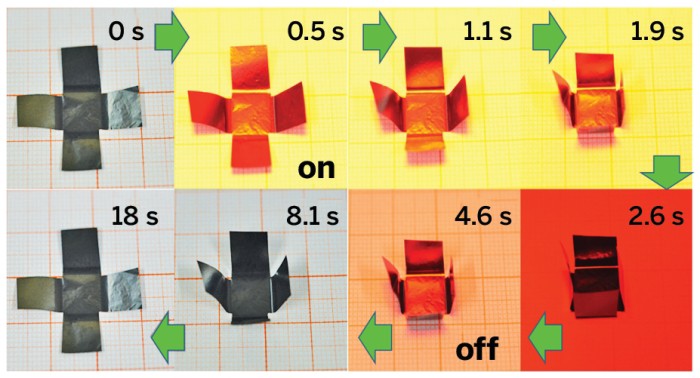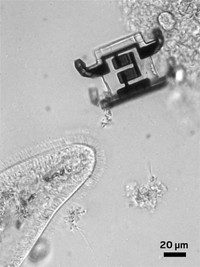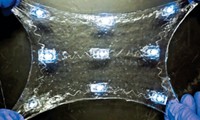Advertisement
Grab your lab coat. Let's get started
Welcome!
Welcome!
Create an account below to get 6 C&EN articles per month, receive newsletters and more - all free.
It seems this is your first time logging in online. Please enter the following information to continue.
As an ACS member you automatically get access to this site. All we need is few more details to create your reading experience.
Not you? Sign in with a different account.
Not you? Sign in with a different account.
ERROR 1
ERROR 1
ERROR 2
ERROR 2
ERROR 2
ERROR 2
ERROR 2
Password and Confirm password must match.
If you have an ACS member number, please enter it here so we can link this account to your membership. (optional)
ERROR 2
ACS values your privacy. By submitting your information, you are gaining access to C&EN and subscribing to our weekly newsletter. We use the information you provide to make your reading experience better, and we will never sell your data to third party members.
Materials
Self-Folding Graphene Machines
Materials: Patterned sheets are powered by water vapor and laser light
by Matt Davenport
November 6, 2015
| A version of this story appeared in
Volume 93, Issue 44
PAPERWORK
Using their new graphene oxide paper, the Donghua researchers designed simple machines to perform a variety of tasks. Click play to watch the rudimentary robots go.
Credit: Donghua University
Self-folding machines made from graphene oxide paper are inspiring some researchers to dream of a future with real-life Transformers and autonomous search-and-rescue robots.
Many large engineering hurdles stand between humanity and an origami Optimus Prime, but the researchers who developed the new machines say that their innovations could find more immediate uses in sensors, artificial muscles, and wearable devices.
Researchers led by Hongzhi Wang and Qinghong Zhang at Donghua University were inspired by the idea of melding the ancient art of origami with modern materials, a recent trend in flexible device research. But the team wanted to push the field a step further.
“We thought it would be more interesting to make an origami device that not only folds itself but also moves on its own,” Wang says. To do this, the team developed a graphene oxide “paper” that controllably folds, allowing the team to make devices that can bend, grab, or walk (Sci. Adv. 2015, DOI: 10.1126/sciadv.1500533).
The researchers start with two different solutions of graphene oxide flakes: One contains bare flakes, and the other contains flakes coated with polydopamine. The researchers filter the solutions to snag the flakes and build up macroscopic graphene oxide sheets. With each solution, the researchers block different parts of the filter to control where bare and protected materials accumulate.
The team then exposes a sheet to hydriodic acid to reduce the bare graphene oxide, which becomes hydrophobic. The protected graphene oxide, however, remains hydrophilic. Different regions of the same sheet will thus repel or absorb water vapor in the air, creating a strain on the paper that can cause it to fold. That strain can be amplified by heat from an IR laser.
Researchers have been working on similar polymer-based devices for years, but Wang says that the new machines are more mechanically robust.
The graphene oxide machines are also more nimble and maneuverable than most of their polymer predecessors, says Jesse L. Silverberg, a physicist with the Wyss Institute at Harvard University who was not involved with the study. “This opens up a lot of new possibilities,” he says.






Join the conversation
Contact the reporter
Submit a Letter to the Editor for publication
Engage with us on Twitter